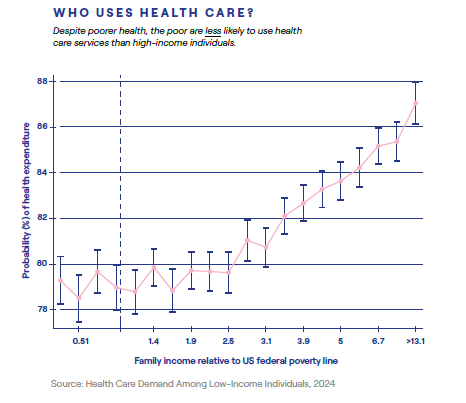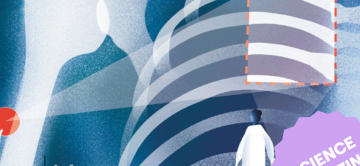This article was published in TSE science magazine, TSE Mag. It is part of the Autumn 2024 issue, dedicated to health. Discover the full PDF here and email us for a printed copy or your feedback on the mag, there.
Designing an equitable and efficient health care system has become increasingly important in light of rising health inequality: low-income individuals have poorer health, shorter lives, and have benefited less from technological progress in medicine than their higher income counterparts. Yet simply making care more affordable may not be the solution to reducing health inequities. Angelique Acquatella explains why the most vulnerable do not always benefit from subsidized care.
WHY IS IT SO DIFFICULT TO OVERCOME HEALTH INEQUALITIES?
Despite suffering from worse health, the poor use fewer health care resources than their wealthier counterparts. Even when care is free, low-income individuals are less likely to use health care services. In other markets, low-income individuals are usually highly price-sensitive. In the health care market, however, I find that the poor are less responsive to changes in health care prices. This is because a disproportionate share of them use zero health care, even when it is free.
WHY WOULD PEOPLE IN NEED AVOID GETTING TREATED?
The key insight is that cash constraints present the poor with very different tradeoffs. Giving up resources is very costly for those with low incomes: an individual with chronic back pain may be well aware that physical therapy is valuable, but she may not be willing to forgo her monthly rent payment in order to go to the doctor. They must decide whether the benefits of care outweigh other basic needs. Even when treatment is free, there are social determinants that raise the transaction costs of using care. Taking the bus to go to the doctor, getting a day off from work, or finding temporary childcare, are factors that contribute to the ability to take up care, above and beyond the direct costs of the doctor’s visit.
HOW CAN THESE INSIGHTS HELP TO ENSURE ALL CITIZENS OBTAIN APPROPRIATE CARE?
Directly targeting the social determinants of health is a crucial first step to reducing health inequality. Public health policy must go beyond health care subsidies (see below), directly targeting the transaction costs that make it difficult for disadvantaged individuals to participate in the health care system. For example, the direct provision of lowcost primary care services in low-income neighborhoods significantly reduced mortality among beneficiaries (Bailey and Goodman-Bacon, 2015). We need better hospitals and health centers in poor areas, with better transport and information about how to access care.
Many governments use health subsidies to provide benefits. These are often financed through tax revenue. In the US, for example, funding for Medicaid and other programs is sent to care providers and insurers to reduce health costs for low-income families.





